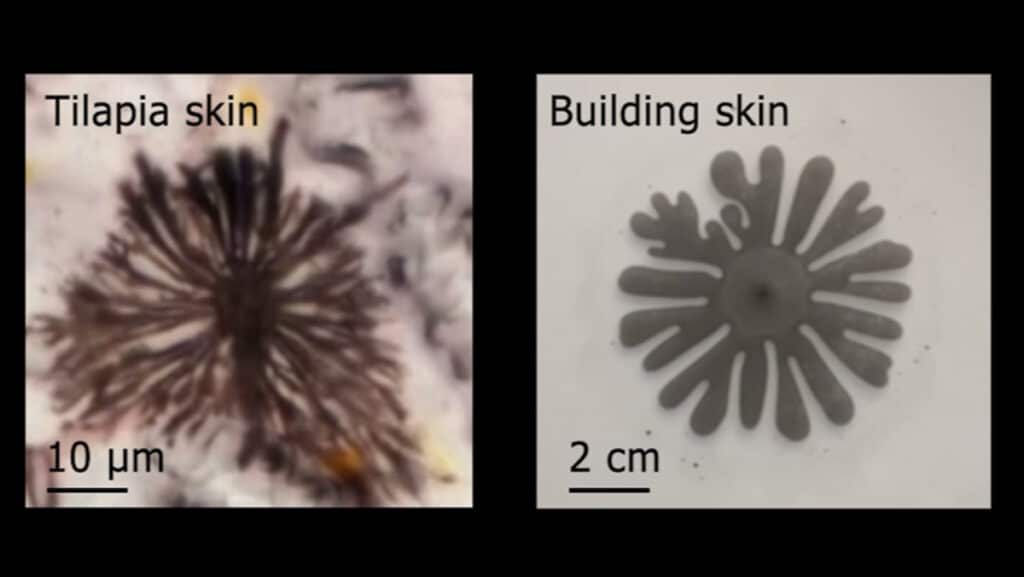Typical buildings are static structures, unable to adjust to dynamic temperature and daylight fluctuations. Adaptive facades that are responsive to these unsteady solar conditions can substantially reduce operational energy inefficiencies, indoor heating, cooling, and lighting costs, as well as greenhouse-gas emissions.
Inspired by marine life like fish, crab, and Krill, University of Toronto researchers have designed a new, low-cost “optofluidic” system that could help buildings save energy needed for lighting, heating, and cooling by dynamically changing the appearance of their exteriors.
Krill – shrimp-like marine organisms – are transparent, which means that the ultraviolet light from the sun can enter through their skin and damage their internal organs. In response, Krill deploy a simple and effective shading system to protect themselves from the sun. They use colorful pigment granules beneath their skin to darken themselves when it’s too bright out and get lighter again when the sun fades.

Buildings also have a “skin” consisting of their exterior facades and windows. But today, these outer layers are mostly static and unchanging. Researchers developed a prototype of optofluidic cells consisting of a layer of mineral oil approximately one millimeter thick, sandwiched between two transparent sheets of plastic.
A tube is connected to the center of the cell to inject a small amount of water containing a pigment or dye. Injecting this water “guest fluid” creates a bloom of color that can be controlled via a digital pump that runs in both directions. Adding more water makes the bloom larger while removing some makes it smaller.
To determine the efficiency of their method, researchers have built computer models that simulated how a fully automated and optimized system using these cells would compare to one that used motorized blinds or electrochromic windows.
“What we found is that our system could reduce the energy required for heating, cooling, and lighting by up to 30 percent compared with the other two options,” says Raphael Kay, master’s student at the University. “The main reason for this is that we have much finer control over the extent and timing of solar shading. Our system is analogous to opening and closing hundreds of tiny blinds at different locations and times across a facade. We can achieve all this with simple, scalable, and inexpensive fluid flow.”
The team also found that the large arrays of the cells could act like pixels, creating optofluidic displays capable of producing pointillist-style artworks. The team also simulated images of Albert Einstein and Marilyn Monroe in their models.
Researchers hope that the idea of using dynamic facades to save energy will shift conversations around both building design and climate change.
